
Every now and then we take a break from our usual routine and do something different. In this instance, the girls wanted to learn about Russia. So I put together a unit study for the week and we made a start. I prepared by checking out ideas on the internet and then surfed Amazon for books on Russia. I used the National Library as my resource as it was put together at short notice and I didn't have time to buy any books.
Having done the study, I would recommend the Eyewitness: Russia book highly as a great book for getting an overview on Russian History and culture. Diane Stanley's biographies are always fascinating and well written.
This was my booklist:
History / Social Studies/ Geography:
- Eyewitness : Russia by Kathleen Berton Murrell and Andy Crawford – excellent overview with great pictures
- Russia The Land by Greg Nickles
- Russia The People by Greg Nickles
- Colors of Russia by Shannon Zemlicka
- Peter The Great by Diane Stanley
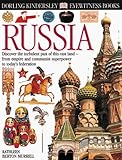
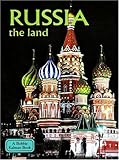
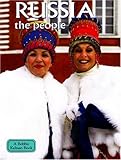
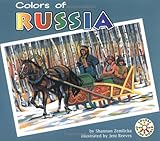

Literature:
- The Magic Nesting Doll by Jacqueline K ogburn – beautiful drawings and nice link to a Matroyshska doll craft and look at the history of Russian nesting dolls
- Old Peter’s Russian Tales by Arthur Ransome – nice collection of Russian folk tales which can be used exclusively without the other picture books but the picture books are lovely!
- Luba and the Wren by Patricia Polacco
- The Sea King’s Daughter: A Russian legend by Aaron Shepard




Art and Music:
- Dreamer from the Village: the story of Marc Chagall by Michelle Markel
- Marc Chagall: What Color is Paradise
- Peter Tchaikovsky by Mike Venezia

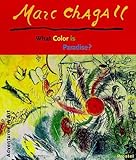

What we did:
Introduction:
we talked about what we knew about Russia (which was very little!) I created an “All About Russia” Notebook which I bound together with a clickbinder and then as we went through our unit I added pages and lapbook pieces to it.
1. Geography :
MAPWORK
We started with a look at Russian geography using a world map and an atlas and the maps in the books we had borrowed. We especially noted all the countries that were on Russia’s border.
I gave them a Blank outline map of Russia and asked them to mark the following cities and landmarks.
Identify these cities:
- Moscow
- St Petersburg
- Kamchatkha
- Siberia
- Vladivostok
- Label all the countries on Russia’s border
- Ural Mountains
- Lake Baikal
- Volga River
- Ob River
- Yenisey River
- Lena River
- West Siberian plain
- Central Siberian Plateau
- Kolyma Mountains
- And mark the Trans Siberian Railway
We then got to the fun bit and made a map out of cookie dough. ( You could also make a salt dough map and paint it). You can find out more about how to make a salt dough map here.
I used 2 packets of easy cook cookie dough, rolled them out into rectangles and baked them.
I then made a bowl of white icing for them to cover the whole cookie with and then they drew the outline of the country with a black icing pen. We used M&Ms and Hersheys kisses for cities, mountains and for the Trans Siberian railway. They used blue icing pens for the rivers and lakes and some green icing for the plains.
Salt dough maps are great if you want to keep them for awhile (and storage is not an issue!) and cookie dough maps get eaten pretty quickly.
CLIMATE/ ANIMALS/ REGIONS OF RUSSIA
After reading through our books and watching some National Geographic videos online featuring different animals indigenous to Russia we did the following:
(i) Made a lapbook piece (which I added to our notebook on Russia bound together with a click binder) on geographical features like –
Lake Baikal, Kamchatka, Volga River, Siberian Plains and the Ural Mountains.
(ii) Made another lapbook piece on animals of Russia – we looked at the Siberian Tiger, brown Bear, grey wolf and Golomyanka fish (from Lake Baikal – our favourite!)
(iii) Finally, we made another lapbook piece on The Regions of Russia which included the Steppes, the Taiga and the Tundra.
2. History
We read from Russia The Land for a general overview of Russian life and from the Eyewitness Russia for an overview of Russian history.
After which we created a mini timeline using several sheets of this template.
I also found several documentaries on YouTube to watch which give a great sense of the time and history ( parental discretion is advised as always) :
Land of the Tsars
Ivan the Terrible
Catherine the Great
The Russian Revolution
We also spent time reading about Russian scientific discovery, famous authors, about the religion, architecture, Matryoshka dolls and Faberge eggs.
We made paper nesting dolls and read about the history of these dolls here.
Below is an idea for an art project after one has studied Russian architecture:
http://laughpaintcreate.blogspot.com/2009/03/russian-architecture.html
3. Literature
We spent our time reading some of the old folktales and doing narrations and I even got them to act some of the stories out. I had them write out one of their narrations for their notebook.
4. Vocabulary
I prepared a page with pictures representing the various words that they came across in their reading like Permafrost, Communism, Tundra, Samovar etc and then prepared another page with their definitions and had them cut and match the words to their definitions.
5. Art and Music

We spent the few weeks listening to any music by Tchaikovsky and read his life story in Peter Tchaikovsky by Mike Venezia.
I prepared some notebooking pages for us to do about his life and his famous piece The Nutcracker.
This site has everything you might want for notebooking, lapbooking or ideas on studying Tchaikovsky.
We also read about the life and work of Marc Chagall and planned to do an art project based on some of these ideas:
http://www.lessonplanspage.com/ArtGetPersonalWithMarcChagall46.htm
http://www.princetonol.com/groups/iad/lessons/elem/stephanie-chagall.htm
http://www.kinderart.com/arthistory/daydreamchagall.shtml
Other things
I also planned some other activites but did not get around to all of them.
I wanted to cook some Russian food, play some traditional Russian games with them and visit the Hermitage Museum online.
As a project - I gave my eldest daughter the task of reading about the Russian People, making a mind map and turning it into a powerpoint presentation for her sister and myself.
We had fun and learned tons of new things.
You can download my notebook pages and clip art from this link:
Notebook pages for Russia









No comments:
Post a Comment